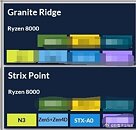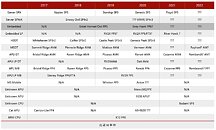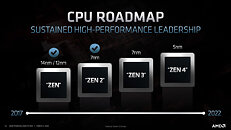
AMD Germany Confirms Ryzen 5 7500F's Western Release Strategy
AMD is preparing its Ryzen 5 7500F processor for a global launch according to reports from earlier today—Team Red's German operation has since informed local media outlets about its updated international release strategy for the iGPU-less Zen 4 desktop SKU. Markus Lindner, a regional company spokesman stated: "This processor model will be available starting July 23, 2023 at 9PM ET. It will be available in greater China as a processor-in-box, and in the rest of world as an option for select system builders."
Chinese reviewers have been getting hands-on experience with the Ryzen 5 7500F, with early reports pointing to impressive performance for its price point ($180) when lined up against competing Intel Core i5-13400 and i5-13400F CPUs. International buyers could express concern regarding AMD Germany's mentioning that availability will be somewhat limited to system integrators. Hopefully these "select system builders" will have good distribution links to retail outlets—70% of TPU quick poll participants expressed interest in seeing a western launch (prior to AMD's "global" announcement).
Chinese reviewers have been getting hands-on experience with the Ryzen 5 7500F, with early reports pointing to impressive performance for its price point ($180) when lined up against competing Intel Core i5-13400 and i5-13400F CPUs. International buyers could express concern regarding AMD Germany's mentioning that availability will be somewhat limited to system integrators. Hopefully these "select system builders" will have good distribution links to retail outlets—70% of TPU quick poll participants expressed interest in seeing a western launch (prior to AMD's "global" announcement).






































